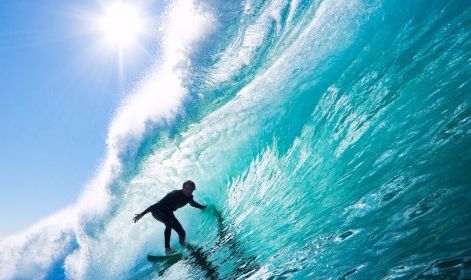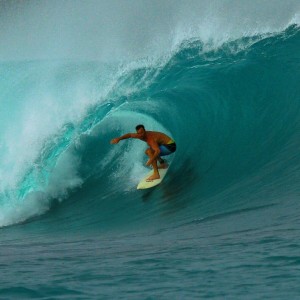
Top 5 Health Benefits of surfing by Ann Hawkins

Top 5 Health Benefits of surfing by Ann Hawkins
What’s better way than relaxing on the beach, basking in the sun and enjoying some great fun activities for recreation! Even better, if these fun activities along with some tremendous health benefits. One such amazing water fun activity as well as sport is surfing. The number of surfers have been steadily increasing everywhere. There are about 23 million surfers worldwide and about 17,36,000 surfers in U.S alone, as per Statistic Brain. Surfing is a great water sport. All you have to do is- hop on your surfboard, learn some know-hows and indulge in this amazing water sport. Let us look at some amazing health benefits that it offers along with the fun.- Surfing helps in boosting the cardiovascular health:
- Surfing helps in reducing stress:
- Surfing helps in improving flexibility:
- Surfing helps in toning the muscles:
- Surfing helps to be motivated:

Fathers Day Blog
As Father’s day approaches we have taken time to reflect on the influences that our Father's have had on us.
Dan,Matt, Joel and Kai have been interviewed, below are their responses:

Dan
The 3 things you love about being a father; 1. Being able to watch your children grow and develop into their own personalities 2. It gives you the privilege of being able to see the world again through a child's eyes. Kids teach us to see the beauty in little day to day things that often we forgot to notice in our busy lives 3. I also love being able to share things that I love with my children. I get more joy out of seeing them catch a great wave or make it to the top of a mountain hike than I would if I was doing it myselfMatt
The most Important things my father taught me... How to drive, swim, tumble turn in the ocean and how to not catch any fish What it would mean to be a father.. Being a father (especially for the first born) would undoubtedly be the highlight of a man's life What is your favourite tradition with my Father? Growing up it was the New Year's Test at the Sydney Cricket Ground. Favourite activity to do with my Father Favourite activity is to be out in the ocean with Dad watching him negotiate the waves on his standup paddle board What is your Dad's favorite story about you as a Child? Favourite story would be about how I was running and jumping out of the cot by the age of about one. . Who are some other important Men in my life to recognise on Father's Day? Fred Hollows / My Granddad
Joel
The most Important things my father taught me... Patience If things don't make you happy don't do them Go with the flow What is your favourite tradition with your Father? Surfing and going to Farmers market in Bellingen Favourite activity to do with your Father ? Surfing and laughing with him as he goes over the falls How would you describe your Father in 3 words Classic Aussie Larrikin What is your Dad's favorite story about you as a Child? Hiding behind his leg because I was shy Who are some other important Men you would like to recognise on Father's Day? Huey ~ God of waves Poseidon ~ God of water
Kai


What is the best training for surfing? – Kai Allison

There are many different ways to train for surfing, each one with it’s own strengths and limitations. Surfing is a challenging sport that incorporates a number of physical skills and abilities. Much of the training for surfing has previously involved isolated movements and lacked specificity and functional relevance to the sport. People in the past have said that surfing itself is the best form of training, due largely to the difficulty in replicating the demands of surfing on dry land. Whilst nothing will ever replicate the same thrill, uncertainty and excitement unique to surfing, the surfset is a way to increase the functionality of training for surfing. The surfset is specifically designed for surfing training and can be seen as a more functional approach to training for surfers, as it enables replication of the movements and perturbation challenges inherent in surfing. The surfset consists of a modified surfboard set upon unstable surface, which creates a functional platform to replicate the dynamic integration of body systems required in surfing. The surfset is designed to engage the core and stabilising muscles, through challenging the body in a dynamic environment. Exercising on the surfset is a full-body approach to training, moving away from training in isolated and non-functional ways. Training in this way helps to develop functional movements sequences and functional muscle activation patterns specific to surfing, resulting in improved function and surfing performance. Workouts on the surfset can be specifically designed to develop aspects of surfing performance such as aerobic fitness, along with muscular strength, power, endurance in addition to balance and coordination. Workouts can also be designed to isolate specific movement sequences in surfing such as the pop up and allows replication of the dynamic balance and proprioceptive demands of surfing. In addition to being a challenging full body workout, exercising on the surfset is also a fun, engaging and unique way to exercise.
Is there any evidence for exercising with the surfset?
Completing exercises such as squats on unstable surfaces such as a surfset has been found to increase core muscle activation, along with an increase in lower limb muscle activity, making this type of training particularly effective and functional for this population (Nairn, Sutherland & Drake, 2017). Specific benefits of surfset training can also be related to common injuries in surfing. Ankle injuries and sprains are one of the most common injuries in surfing and training on the surfset can be targeted specifically to rehabilitate functional stability, range of movement, balance and proprioception for these injuries (Nathanson, Haynes & Galanis, 2002).To summarise, the benefits of training on the surfset include:
- Increased dynamic balance
- Improved core stability
- Greater lower limb joint proprioception
- Development and refinement of surf specific movement patterns
- Increases in muscular power, strength and endurance
- Greater aerobic fitness
Surfing injuries
Being out at the sea, riding the mountainous waves, listening to the surf pounding in your ear can be an exhilarating experience. That, together with advances in surfboard technology, has made surfing an increasingly popular sport. However, it can be hazardous especially if you are starting out or if you are not physically fit. Even seasoned surfers may push their skills to the limit by tackling bigger waves and making daring manoeuvres that can land them into difficulty. Many people are injured while surfing. Some common surfing injuries are:
Lacerations and/or contusions
Cuts and bruises to the head, legs and feet can result from coming into contact either with their own or another surfer's board, the ocean floor, rock or debris. Sprains and strains involving the lumbar (lower back) or cervical (neck) regions, the shoulder and ankle are also common.
Fractures
Fractures to the head, ribs and shoulder may occur as the surfer comes into contact with a reef, rock or the ocean floor. In some cases the nose or teeth may be broken.
Ear and eye damage
The surfer's ears and eyes are also subjected to injury from direct trauma or from the UV rays of the sun reflecting on the water. A "wipe-out" may also perforate the eardrum. Over time, surfers can develop bony growths within the outer ear, a condition known as surfer's ear that leads to deafness.
Overuse injuries
Overuse injuries take place as a result of paddling for prolonged periods face down on the board. The shoulder, neck and back are most affected.
Surfing injuries can be prevented with the use of protective equipment. Nose guards attached to the front of the board can prevent injury if you come into contact with the board. Helmets are necessary when surfing over large waves or reefs; wet suits worn for warmth will guard against cuts from fins, and hoods can protect your ears during a wipe-out. Booties are worn for warmth by some surfers and these can also protect the feet from cuts.
Anyone wanting to engage in this sport should be a strong swimmer, be physically fit and have a good understanding of what surfing entails before getting into the water. A physiotherapy program can help prepare the beginner for his new sport. If you have suffered injury, your physiotherapist will work on balance, flexibility, proprioception (sense of your own body position and orientation) and strength. Range of motion particularly in the legs and core muscles and shoulder will help.
This, together with use of protective gear, will help you make a safe return to surfing.



 6676 4000
6676 4000
